Why does this approach work so well?
Warby Parker has mastered a combination of logistics and customer service. They've not only figured out how to get their product to their customers, but also do it in a way that generates a delightful experience. Thus, customers will be eager to return to their website whenever they need their next pair of glasses.
In this post, we'll discuss the important role customer service plays in your business logistics as well as what you can do to better sync your customer service team with your logistics operation.
But, first, let's start with a brief overview of business logistics and where customer service fits within this department.
Business Logistics
Business logistics refers to the acquisition, storage, and distribution of company resources. Organizations that manufacture and/or transport goods will typically have a logistics department that manages incoming and outgoing products. This ensures orders are filled on time and buyer demand is met.
Unless you're a SaaS company, most businesses will need a strategy to create and deliver their products. Whether you're working B2B, have brick-and-mortar storefronts, or selling products via ecommerce, logistics will play a key role in keeping pace with customer demand. If your logistics are inefficient, you'll have a tougher time getting your product into the hands of your customers, which can lead to friction and potential churn.
This where customer service can optimize your logistics process, and safeguard your business against roadblocks that customers could experience during a brand interaction.
Logistics Customer Servicet
Customer service enhances logistics by making the process more transparent and adding further value to the customer experience. These services provide customers with a clear explanation for when they'll receive a product and why an order might be delayed. This reduces friction within the buyer's journey, especially when customers experience unexpected roadblocks.
A great example of customer service and logistics working hand-in-hand is delivery updates. Nowadays, most ecommerce operations will include an email or short message service (SMS) that updates customers when a product is purchased or delivered. If you've opted-in for live updates, you might even receive texts like the one below, telling you that an order has been shipped.
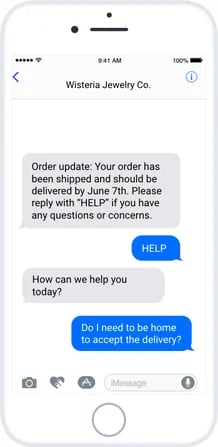
Proactive customer service like this lets the customer know when they can expect a delivery. If a problem pops up, the company has a direct line to the customer and can quickly relay the update. And, like in the example above, the customer can respond with additional questions without having to open a new support ticket.
Delivery updates aren't the only reason why customer service is important to logistics. Below are a few more reasons to consider it when reviewing this essential business function.
Why Is Customer Service Important in Logistics?
1. Customer Service Creates Transparency.
Customers like knowing what your business knows, especially when it's information pertaining to their purchase order. If an order is delayed, they want to know why it was and whether the problem will happen again in the future. In these cases, it's better to provide more details than less, so customers can trust that your business has handled the problem. If you provide vague information or don't answer your customers' questions, they'll have a harder time trusting that this same delay won't happen again.
2. Customer Want Fast Responses.
Since the logistics process contains information that's valuable to both the customer and the business, this presents an opportunity to engage more with your customer base. When your logistics process is transparent, customers are bound to have questions about their orders. When they do, it's important to answer quickly before they start asking about returns, discounts, or refunds. After all, when your product arrives you want your customers to be excited to use it, rather than thinking about how long it took to deliver or what problems it encountered along the way.
3. Customers Want Clear Expectations.
It's great when a company lists shipping times like, "2-day shipping" next to a product. This provides customers with a clear expectation of when they'll receive their order. While that's fantastic when you're buying a new sweater on Amazon, it's also imperative when you're running a business and filling client orders. You need to know when your deliveries will arrive so you can execute other company actions on time.
Read on for some customer service tips you can use to enhance the logistics process at your business.
6 Tips for Improving Logistics With Customer Service
1. Provide Supply Chain Visibility.
Transparency helps your business establish trust with customers and leads. The more they know about your business, the more comfortable they'll be when working with your company.
One way you can foster this relationship is with supply chain visibility. Supply chain visibility shows the customer every step that went into creating your product and shipping to their front door. The customer knows where and how the product was created, how it was stored before purchasing it, and which shipping method was used to deliver it to their location.
It's important to make this information accessible because it shows customers the complete story of your product. They can see where it was built and who played a role in getting it in their hands. For example, if you're an eco-friendly company, you might want your customers to know your product is organic or sourced from local materials. This aspect of your manufacturing process could play an important role in a customer's decision to buy your product.
2. Offer Real-Time Updates.
When you're running a business, timing is everything, and a late delivery almost always throws off your schedule if you aren't alerted to the delay ahead of time.
Think about your local mechanic. If she orders a part for your car on Thursday and it doesn't come in on Friday, you're probably not getting your car fixed until after the weekend. While you can't blame the mechanic for the delay, you're still frustrated that you have to change your weekend plans because you thought you were getting your car back.
One solution to this problem is real-time updates. If your mechanic was sent a text about the delay from her provider, she could have called you immediately to let you know about the delay. Or better yet, if she had SMS customer support, she could send you a text regarding the update, similar to the example below.

3. Be Reliable and Consistent.
Whenever a customer is new to a business there are going to be some initial doubts about their purchase. This is common with ecommerce since the customer can't physically see the item until it arrives at their door. This is why it's important to have a good brand reputation especially when it comes to logistics. If new leads see that customers are leaving positive feedback regarding shipping times and product quality, they'll be more likely to purchase from your website or catalog.
4. Adopt Customer Service Software.
Technology can always help your business operate faster and more efficiently. In this case, customer service software can make all the difference between a bland or delightful logistics experience.
Take Dominos' "Pizza Tracker," for example.
Rather than just providing a standard order tracker, Dominos makes the feature fun and engaging. It tells customers when they can expect their delivery, where their food is being made, and where their order is in the "assembly" process. It also has options to rate the delivery experience or write a review after your food arrives.
Interactive features like this improve the customer experience because it shows you've invested in your delivery process. Not only have you thought out how you're going to deliver products, but you've also adopted an automated system to communicate that process to your customers.
5. Look for Ideal Partnerships.
One way to reduce friction in your logistics process is to partner with other businesses that can help you store or distribute resources.
For example, Amazon has partnered with Kohls to provide in-store returns to its customers. If an Amazon customer wants to return a product, they can go to Kohls to package and ship it to Amazon for free. This a great alternative service because it makes it easier for customers to return products but doesn't add any logistical stress on Amazon. Kohls fronts all of the shipping efforts while Amazon just has to process the return.
6. Collect Customer Feedback.
If you're not sure how to improve your logistics, a good place to start is collecting customer feedback. Ask customers directly how they feel about the buying process and where your business could stand to make some improvements.
One way you can gather this feedback is by triggering a follow-up survey after a product is shipped. Below is an example of what that might look like.
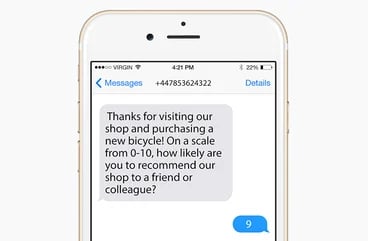
Read on for more tips with our ultimate guide to customer service.
.png?width=112&height=112&name=Image%20Hackathon%20%E2%80%93%20Vertical%20(9).png)
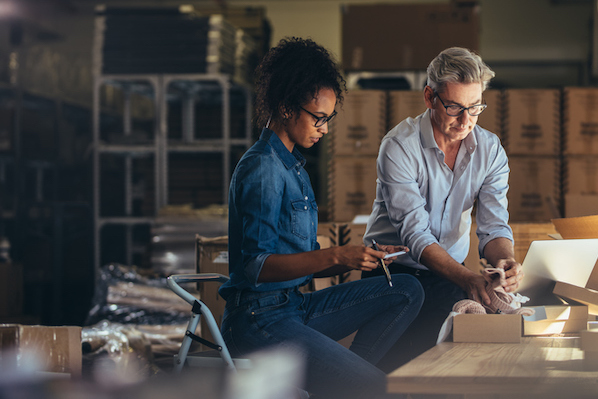
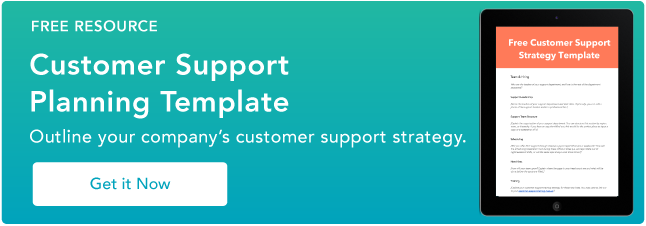

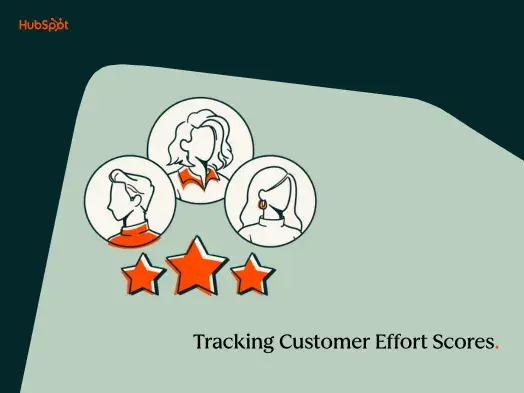




.png)

-2.png)
